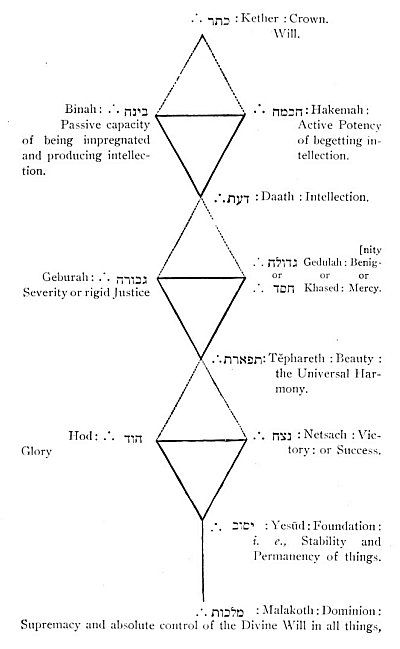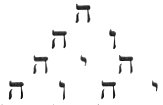MITHRAS was the Sun-God of the Persians; and was fabled to have been born in a grotto or cave, at the Winter Solstice. His feasts were celebrated at that period, at the moment when the sun commenced to return Northward, and to increase the length of the days. This was the great Feast of the Magian religion. The Roman Calendar, published in the time of Constantine, at which period his worship began to gain ground in the Occident, fixed his feast-day on the 25th of December. His statues and images were inscribed, Deo-Soli invicto Mithræ–to the invincible Sun-God Mithras. Nomen invictum Sol Mithra. . . . Soli Omnipotenti Mithræ. To him, gold, incense, and myrrh were consecrated. “Thee,” says Martianus Capella, in his hymn to the Sun, “the dwellers on the Nile adore as Serapis, and Memphis worships as Osiris; in the sacred rites of Persia thou art Mithras, in Phrygia, Atys, and Libya bows down to thee as Ammon, and Phœnician Byblos as Adonis; and thus the whole world adores thee under different names.”
OSIRIS was the son of Helios (Phra), the “divine offspring con-generate with the dawn,” and at the same time an incarnation of Kneph or Agathodæmon, the Good Spirit, including all his possible manifestations, either physical or moral. He represented in a familiar form the beneficent aspect of all higher emanations and
p. 588
in him was developed the conception of a Being purely good, so that it became necessary to set up another power as his adversary, called Seth, Babys or Typhon, to account for the injurious influences of Nature.
With the phenomena of agriculture, supposed to be the invention of Osiris, the Egyptians connected the highest truths of their religion. The soul of man was as the seed hidden in the ground, and the mortal framework, similarly consigned to its dark resting-place, awaited its restoration to life’s unfailing source. Osiris was not only benefactor of the living; he was also Hades, Serapis, and Rhadamanthus, the monarch of the dead. Death, therefore, in Egyptian opinion, was only another name for renovation, since its God is the same power who incessantly renews vitality in Nature. Every corpse duly embalmed was called “Osiris,” and in the grave was supposed to be united, or at least brought into approximation, to the Divinity. For when God became incarnate for man’s benefit, it was implied that, in analogy with His assumed character, He should submit to all the conditions of visible existence. In death, as in life, Isis and Osiris were patterns and precursors of mankind; their sepulchres stood within the temples of the Superior Gods; yet though their remains might be entombed at Memphis or Abydus, their divinity was unimpeached, and they either shone as luminaries in the heavens, or in the unseen world presided over the futurity of the disembodied spirits whom death had brought nearer to them.
The notion of a dying God, so frequent in Oriental legend, and of which we have already said much in former Degrees, was the natural inference from a literal interpretation of nature-worship; since nature, which in the vicissitudes of the seasons seems to undergo a dissolution, was to the earliest religionists the express image of the Deity, and at a remote period one and the same with the “varied God,” whose attributes were seen not only in its vitality, but in its changes. The unseen Mover of the Universe was rashly identified with its obvious fluctuations. The speculative Deity suggested by the drama of nature, was worshipped with imitative and sympathetic rites. A period of mourning about the Autumnal Equinox, and of joy at the return of Spring, was almost universal. Phrygians and Paphlagonians, Bœotians, and even Athenians, were all more or less attached to such observances; the Syrian damsels sat weeping for Thammuz or Adoni, mortally
p. 589
wounded by the tooth of Winter, symbolized by the boar, its very general emblem: and these rites, and those of Atys and Osiris, were evidently suggested by the arrest of vegetation, when the Sun, descending from his altitude, seems deprived of his generating power.
Osiris is a being analogous to the Syrian ADONI; and the fable of his history, which we need not here repeat, is a narrative form of the popular religion of Egypt, of which the Sun is the Hero, and the agricultural calendar the moral. The moist valley of the Nile, owing its fertility to the annual inundation, appeared, in contrast with the surrounding desert, like life in the midst of death. The inundation was in evident dependence on the Sun, and Egypt, environed with arid deserts, like a heart within a burning censer, was the female power, dependent on the influences personified in its God. Typhon his brother, the type of darkness, drought, and sterility, threw his body into the Nile; and thus Osiris, the “good,” the “Saviour,” perished, in the 28th year of his life or reign, and on the 17th day of the month Athor, or the 13th of November. He is also made to die during the heats of the early Summer, when, from March to July, the earth was parched with intolerable heat, vegetation was scorched, and the languid Nile exhausted. From that death he rises when the Solstitial Sun brings the inundation, and Egypt is filled with mirth and acclamation anticipatory of the second harvest. From his Wintry death he rises with the early flowers of Spring, and then the joyful festival of Osiris found was celebrated.

Moe is the founder of GnosticWarrior.com. He is a father, husband, author, martial arts black belt, and an expert in Gnosticism, the occult, and esotericism.





